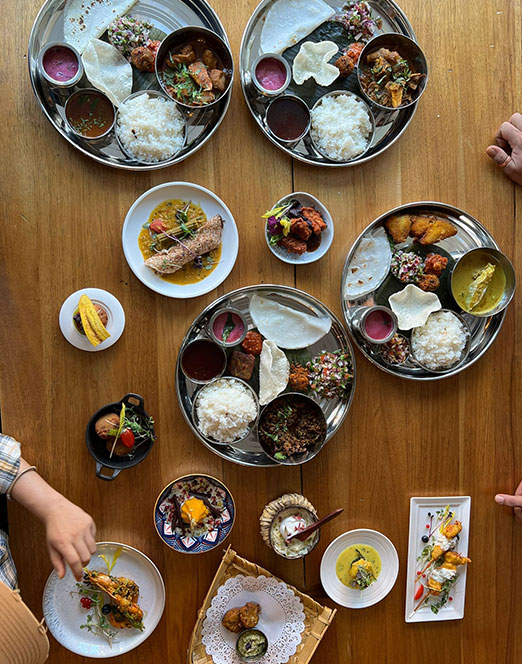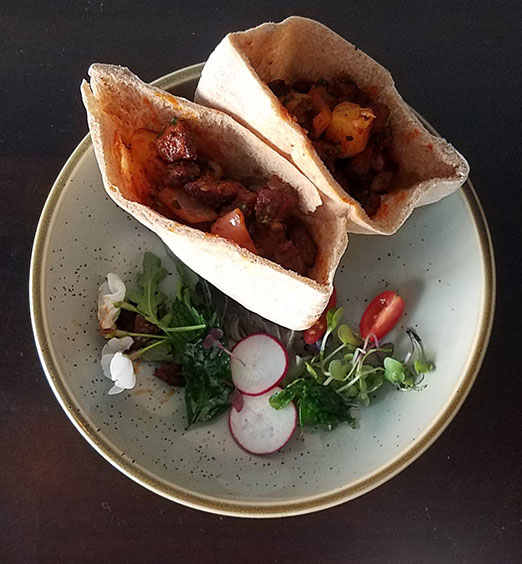
DINE IN EXPERIENCE
Indian Table showcases the cuisine from the state of Goa (Cozinha de Goa) which lies on the southwestern coast of India (the city of Mumbai and Goa are on the same coastline.
Goa, once a colony of the Portuguese besides historically being a kingdom with Hindu, the Muslim Bijapur Sultanate, and Maratha rulers define the cuisine, culture, and language of modern Goa.
With the Portuguese came tomatoes, potatoes, the cashew nut, chili pepper (from the new world), the use of wine-based vinegar, and European baking (bread, cakes, pastries) into the Indian sub-continent via Goa which has become an integral part of modern Indian cuisine.
Goa is the smallest state in the union of India and is an amalgamation of both Indian and Western cultures, religions, cuisine, and lifestyle.
Goan cuisine is broadly divided into two main styles— Goan Catholic and Goan Hindu cooking, with each cuisine having its own unique taste and characteristics.
 At Indian Table, Chef Eric McCarthy presents Goan Catholic cuisine inspired by local and Portuguese influences through Pescatarian dishes (Caldinha, Kodi, Balchao, Recheado) Poultry & Meat (Bafado, Xacuti, Cafreal) Pork (Sorpotel, Vindalho, Chourico) and Vegetarian dishes that use indigenous exotic Goan herbs and spices such as the Indian Mangosteen ‘Kokum’ tamarind, turmeric root, the Indian Sichuan pepper ‘Triphal’, and stone flower ‘dagad Phool’
At Indian Table, Chef Eric McCarthy presents Goan Catholic cuisine inspired by local and Portuguese influences through Pescatarian dishes (Caldinha, Kodi, Balchao, Recheado) Poultry & Meat (Bafado, Xacuti, Cafreal) Pork (Sorpotel, Vindalho, Chourico) and Vegetarian dishes that use indigenous exotic Goan herbs and spices such as the Indian Mangosteen ‘Kokum’ tamarind, turmeric root, the Indian Sichuan pepper ‘Triphal’, and stone flower ‘dagad Phool’
Weekends are when pescatarian and other specials are prepared, Xec Xec, Ambot Tik, Caldera, feijoada, croquettes, and Portuguese-influenced soups along with local bread such as “Poi” or “Poee” as the Goans pronounce it, and fermented steamed rice cakes “Sanna”.
Desserts at Indian Table are festive featuring classics such as the ‘Portuguese Serradura,’ layered coconut cake ‘Bebinca’ or burnt molasses ‘Dodol.’